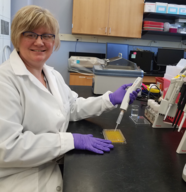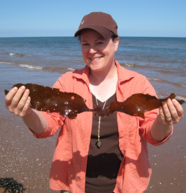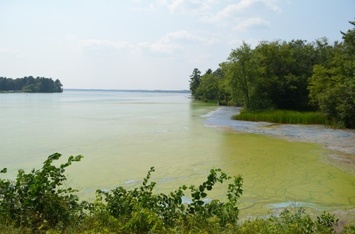 Calling for reviewers! Join our Statewide HAB Signage Workgroup!

We are designing a new set of aluminum HAB-related advisory and beach closure signs and we need your help! The signs will be available to local and tribal health and water resource officials for posting during suspected or confirmed toxic blooms at public beaches and swim areas. We are seeking feedback from health officers, environmental health specialists, and water resource managers on the proposed use, formatting, and language for each sign.
Reviewers will be answering a brief survey about each sign and possibly participating in group email discussions. The workgroup will review signage during April so that final designs are ready for production and distribution at the start of the HAB season in May. Local and tribal agencies will be able to order the signs through a Madison-based program; details on ordering will come at a later time. If you would like to be a part of this statewide effort, please email dhsdphhabs@dhs.wi.gov with the subject heading “HAB Signage Workgroup” and request to be added.
|
Since 2009, HAB-related illness (HABRI) surveillance and response in Wisconsin has depended on strong partnerships with the Centers for Disease Control and Prevention (CDC), the Department of Natural Resources (DNR), state and local public health, the Wisconsin Poison Center, lake associations, and clinicians in human and veterinary medicine. However, three individuals at the Division of Public Health (DPH), the State Laboratory of Hygiene (SLH), and the DNR are responsible for the core execution of these activities. Learn more about them below!

Amanda Koch (DPH)
Education: B.S., Biology, UW-Madison; M.P.H.-Epidemiology, University of Illinois at Chicago
Role in HABRI investigations: Amanda recently completed the CDC/CSTE Applied Epidemiology Fellowship in waterborne diseases at DPH. After her fellowship, Amanda stayed on as an epidemiologist continuing to work on waterborne illness prevention. As the DPH HAB Program Coordinator, Amanda receives and investigates reports of HABRI, interviews illness complainants, coordinates water sampling and analysis with the DNR and SLH, and helps local health departments interpret health risks to the public and issue health advisories and beach closures.
Favorite blue-green algae fun fact: “Blue-green algae have doppelgängers! Accumulations of non-toxin-producing green algae (freshwater “seaweed”), duckweed, and even pollen have often been mistaken for blue-green algae blooms!”.
|

Dawn Perkins (SLH)
Education: B.S., Zoology, UW-Madison; M.S., Limnology and Marine Science, UW-Madison
Role in HABRI investigations: Dawn is celebrating her 25th anniversary working at SLH and has worked with cyanobacteria for 21 years! During HABRI investigations, Dawn receives water sample submissions from the water body where the ill person or animal was exposed, microscopically identifies and enumerates cyanobacteria in those samples, analyzes them for various cyanotoxins, and shares the results with DNR and DPH.
Favorite blue-green algae fun fact: “Cyanobacteria were one of the first organisms to photosynthesize and produce oxygen, so they helped transform and create Earth’s atmosphere as we know it today.”
|

Gina LaLiberte (DNR)
Education: B.S., Biology, University of Michigan; M.S., Resource Ecology Science, University of Michigan
Role in HABRI investigations: Gina has served as the statewide blue-green algae coordinator at the DNR since 2011 and has worked on algae and cyanobacteria for 25 years. Gina coordinates the DNR’s response monitoring in HABRI investigations. She coordinates water sampling with regional DNR staff and SLH, reviews and compiles lab results, and sends the results along with background information on interpreting them to local and tribal public health staff, DHS and DNR staff, and others involved in the investigation.
Favorite blue-green algae fun fact: “Nostoc is my favorite cyanobacterium. It grows as colonies that range from microscopic up to the size of a chicken egg. There is even a rare species that grows in some Wisconsin lakes which looks like green raspberries.”
|
 |
|
Let's Get Social! |

This issues's sample post and photo suggestion:
If you’re traveling somewhere warm for St. Paddy’s Day, don’t get UN-lucky with blue-green algae! If water looks like pea soup or is scummy, stay out and don’t let your kids or pets swim in it. Learn more about blue-green algae: http://b.link/bgalgae.
|

Missed a past issue? Previous issues are available on our Resources for Health Professionals webpage.
Email us your burning questions! If others can benefit from hearing the answer to your question, we’ll feature it in a future issue.
Remember that we are always available for consultation on any HAB health-related issue by email or phone (608-266-1120).
|
|